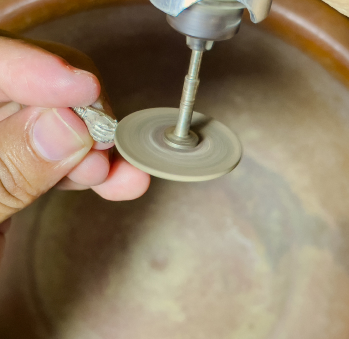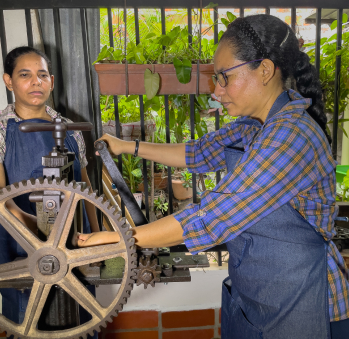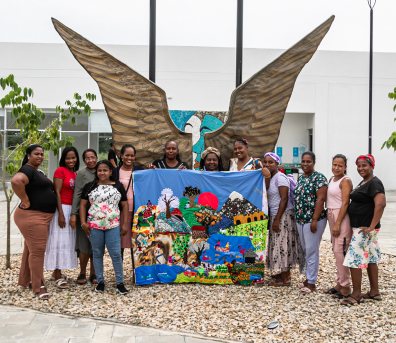Leticia Gutiérrez Beleño
Workshop: Joyería Leanjo
Craft: Joyería/Bisutería
Trail: Bolívar Route
Location: Mompox, Bolívar
SCHEDULE YOUR VISIT
Carrera 3 # 19-38
3168508879
3234588506
letiana199@gmail.com
@orfebreria.leanjo
Leticia, along with Ana and José Luis, have inherited the the Gutiérrez tradition. They come from a family of goldsmiths that began with their grandfather, Teófilo María Gutiérrez Villanueva. In time, the tradition got handed over to Vicente, their father, and Ana Regina and Teófilo Enrique, their aunt and uncle. They did not have a hard time getting into metalworking because, in the past, they were in the woodworking business. The Gutiérrez family had the privilege of witnessing the establishment of Mompox’s most emblematic trade, which has let the town shine bright over the years. They have also seen how many goldsmithing techniques —such as embossing, sieving, and casting— have gradually disappeared. Their workshop is one of the few places where said techniques are still
preserved.
Leticia remembers the words her father told her back in the days of World War II when she was still a child and Mompox was not a town of jewelers but blacksmiths. It should not come as a surprise that her grandfather, aside from being a great draftsman, mathematician, and, of course, goldsmith, also mastered the craft of forging in his lifetime. He came up with what would become the family’s trademark: an inventory of more than 500 embossing models that produce unique pieces of jewelry even today. Upon request from a customer in Aruba, Leticia invented the Mompox fish: a huge sea bass with 600 handmade scales of five different sizes that move. The latter is the family’s best-kept secret and something she is very proud of.
She says that the embossing technique was replaced by filigree because it is more expensive and uses a much larger amount of raw material. To grasp why this is, you only need to listen to her. “Go figure! In filigree, the metal is melted, forged, laid down, profiled, spun, flattened, frosted, twisted, filled, welded, sanded, and settled. Only then is it ready to be used,”” she says like a good teacher. If you multiply this level of complexity by three or four times, you can start to fathom what it takes to employ the embossing technique.
Leticia is filled with energy and laughter. She is certain that one of the laminating machines they have had in the house for as long as she can remember —the one with two arms— is either jealous or angry at her because she has always preferred the other one — the one with just one arm. Her brother plays along with this theory of hers and asks her to leave the room when they are going to use the two-armed machine so it will work. To his amusement, she always leaves.
She celebrates every day she is allowed to live in this, her beloved land. She often goes out for a walk at five in the morning to enjoy the freshness of the air and contemplate the Magdalena River that surrounds the village. There, she enjoys watching herons. She prefers to call them cranes because it makes them seem statelier and more elegant. She also likes to witness cast-net fishing, which she and her siblings later depict in the precious gold and silver wares they make. She is made up entirely of memory, pride, wisdom, and, above all, her craft. For now, her students are the only ones who can receive her heritage. Yet, perhaps an heir to the Gutiérrez family legacy will come one day, and they will be able to celebrate.
Craft






Artisans along the way
Artisans along the way
No puede copiar contenido de esta página










































































